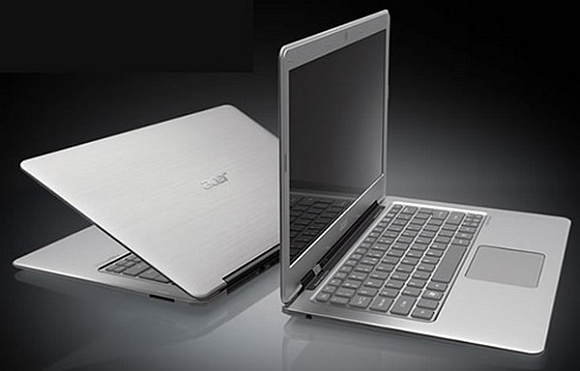

If you haven't heard about the laptop categories of ultrathins and ultrabooks by now, you may want to consider moving out of that cave. Intel’s biggest advertising push in almost ten years is well underway and will probably reach into most caves via consumption of video or TV media.
‘Ultrabook’ is the trade-marked Intel version of the newly advanced breed of very thin-and-light laptops, while ‘Ultrathin’ is the generic name for either AMD or ARM powered versions. One or more of those versions are currently being designed and brought to market by just about every laptop vendor and OEM (Original Equipment Manufacturer). Before the year is over, expect more than 85 new designs to hit the marketplace, with 75 or more falling into the ultrabook category.
It seems likely that 85 is an understatement, because the AMD designs will be competitive with Intel on a functionality basis, but at significantly lower prices for consumers. Intel has said they know 75 ultrabooks are in the design pipeline, and it is not known how many AMD based ultrathins will be released. That's before we even find out how many will include laptop parts from ARM chip-makers such as Qualcomm and many other manufacturers. ARM means Advanced RISC Machine. RISC is the term for Reduced Instruction Set Computer.
The industry seems to have been apprehensive over whether or not prices for ultrathin and ultrabook laptops would fall to an Average Selling Price (ASP) below US-$800 in 2012. That seems rather strange, because in March an Acer Intel-based ultrabook that previously sold for US-$899 went on sale for $799 with free shipping and a $200 coupon, effectively reducing the price to $599. Toward the end of 2011 one ultrabook sold for $699 on a sale promotion.
Price Reduction Strategies
One of the costly laptop parts, common to the entire category of ultra-thin-and-lights, is the attractive metal case which helps give them a look similar to the MacBook Air. As a result of price-reduction initiatives, you should expect to see some highly capable notebooks with plastic bodies utilizing manufacturing techniques that make them as strong as their metal equivalents. It gets even better. The metallic shell can be retained in "stamped hybrid cases" with a thin aluminum sheet covering a strong plastic case.
Prices for ultrabooks and ultrathin laptops can be reduced even more by using hybrid hard-drives, which incorporate small amounts of sold-state memory, with the greatly improved and much thinner 7mm magnetic drives, instead of pure solid-state-drives. Prices for solid-state memory are plummeting, and analysts say that trend will continue.
Traditional chunkier and heavier laptops are currently selling in greatest volume in the US-$299 to $599 price-range, and those prices account for 70-percent of all laptops sold world-wide. It should be obvious by now, that by the end of December, or early in 2013 consumers will be able to buy very capable ultrabooks and ultrathins in the US-$349 to $599 price-range. There will be plenty of choices, with more than 100 models from which to choose.
Whatever the prices turn out to be later this year, analysts predict AMD based ultrathins will be $100 to $200 lower in price than ultrabooks with Intel chip-sets, and AMD is getting their next generation of chips into consumer's hands about two months earlier than Intel. AMD’s answer is the APU, Accelerated Processing Units containing both a CPU (Central Processing Unit), and a GPU (Graphics Processing Unit), often referred to as a system-on-chip design (SoC).
Assessment
As pointed out in an earlier article, analysts said commoditization would occur. Prices will continue dropping rapidly even as substantial improvements are implemented. Individual consumers and IT departments will satisfy their overdue replacement needs. Manufacturers will be happy to have commodity volume sales, and the ultrabooks and ultrathins tidal-wave will advance as previously predicted.
With or without the Bugs Bunny character-voice, the question seems to be, "What's all the hubbub, bub?"; and why all the agonizing over whether or not prices will drop fast enough to encourage sales? Perhaps the one worrying about that could be Intel, because AMD has it "made in the shade". Watch out for falling laptop prices: Walmart may want to take lessons from the laptop industry.

 Laptop & Tablet Parts
Laptop & Tablet Parts




















